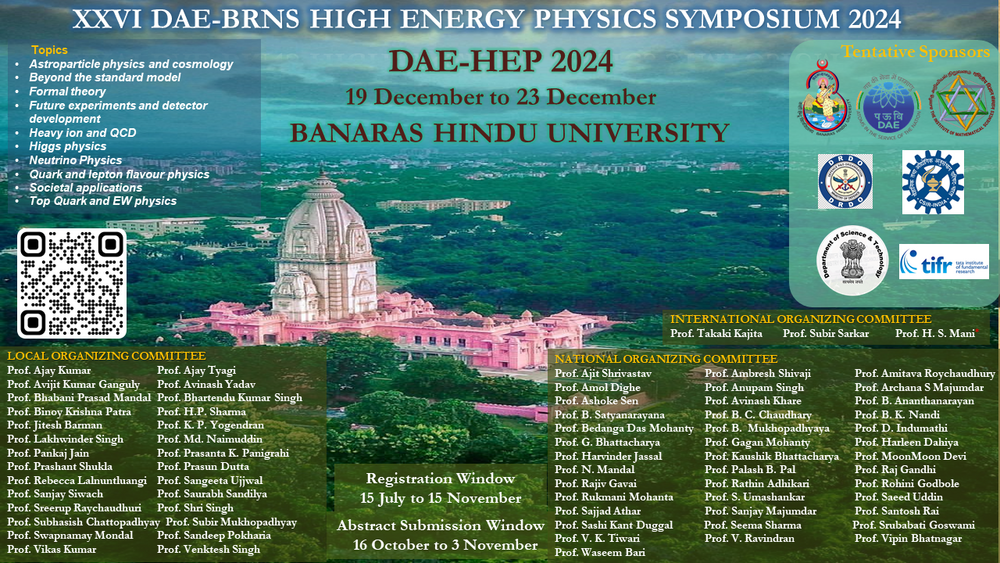Speakers
Description
Studying cosmic ray-induced air showers in Earth's atmosphere provides valuable insights into the primary cosmic rays, offering an indirect approach to analysing these high-energy particles. The muonic component in air showers is particularly informative for determining the mass composition of primary cosmic rays, underscoring its significance. Hadronic interaction models, such as EPOS-LHC, QGSJET II-04, and SIBYLL 2.3, are employed to describe air shower development, predicting key observables like muon content and the lateral shower profile. However, discrepancies persist between these model predictions from Monte Carlo (MC) simulations and experimental data indicating muon deficit, suggesting further refinements are needed in current models. The GRAPES-3 Muon Telescope (G3MT), located at 2200 meters above sea level, is a large-area (560m²) ground-based detector comprising 3,712 gaseous proportional counters sensitive to muons. A larger telescope, with a 70% increase in field of view, is currently under construction to expand observational capabilities. In this contribution, we will present a comparative analysis of the three hadronic models EPOS-LHC, QGSJET II-04, and SIBYLL 2.3 and by examining simulation results with data from the GRAPES-3 experiment to assess the models' effectiveness in the higher energy range. Focusing on muon lateral distribution and its dependence on cosmic ray composition, we investigate primary particles, including protons, helium, nitrogen, aluminium, and iron, across the TeV to PeV energy spectrum, aiming to enhance our understanding of model performance at higher energies and refine interpretations of muon observables in GRAPES-3 experiment.
| Field of contribution | Experiment |
|---|

